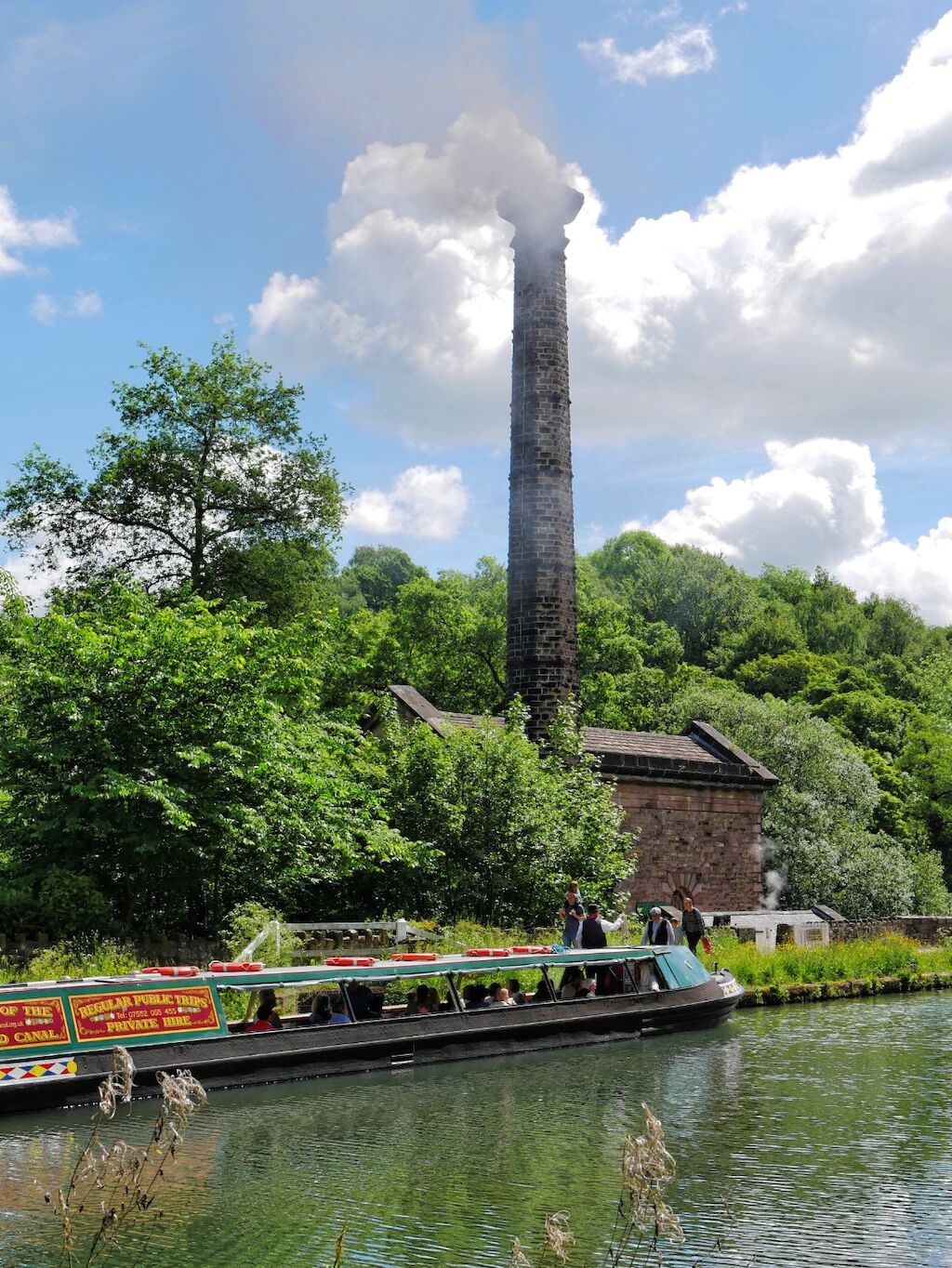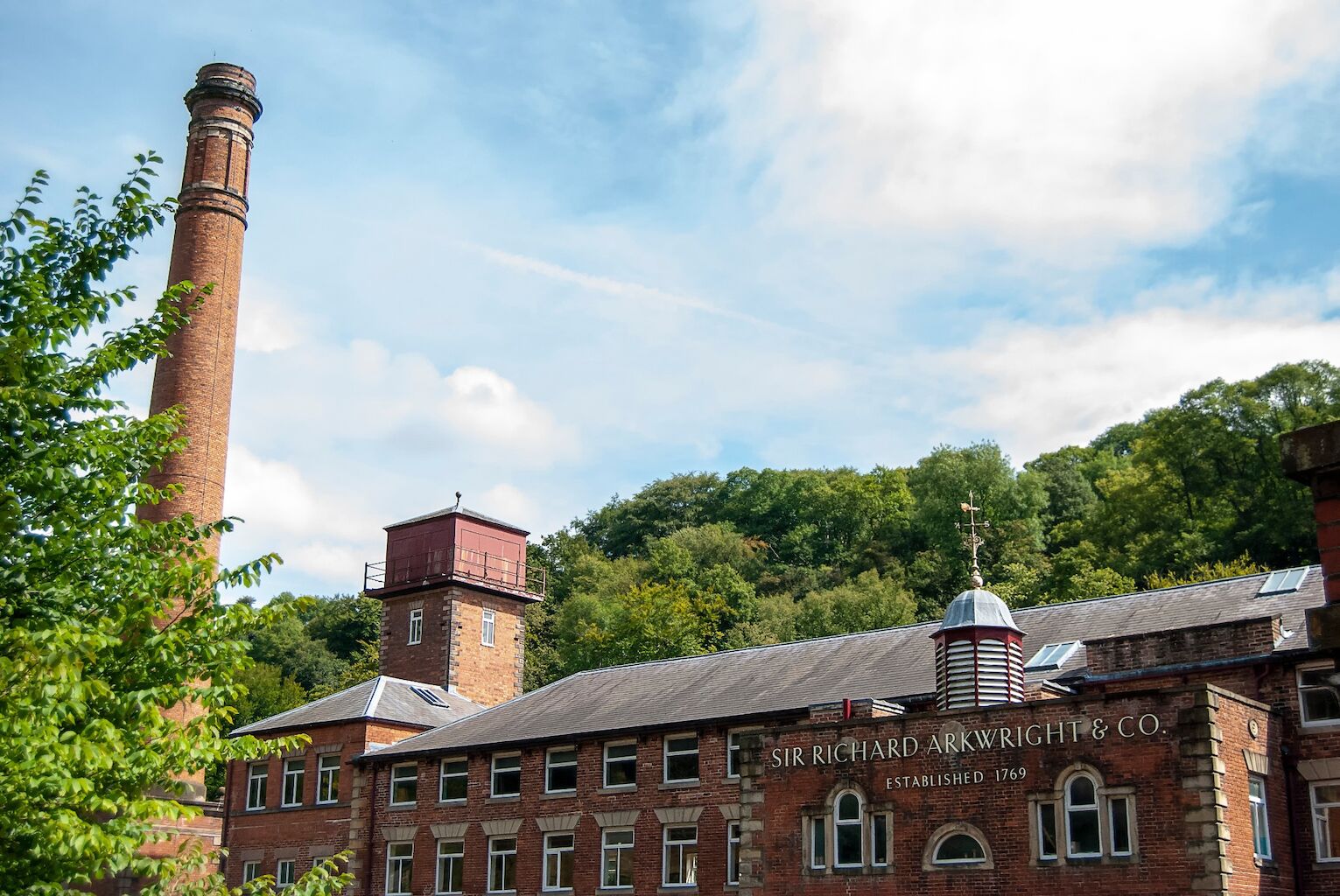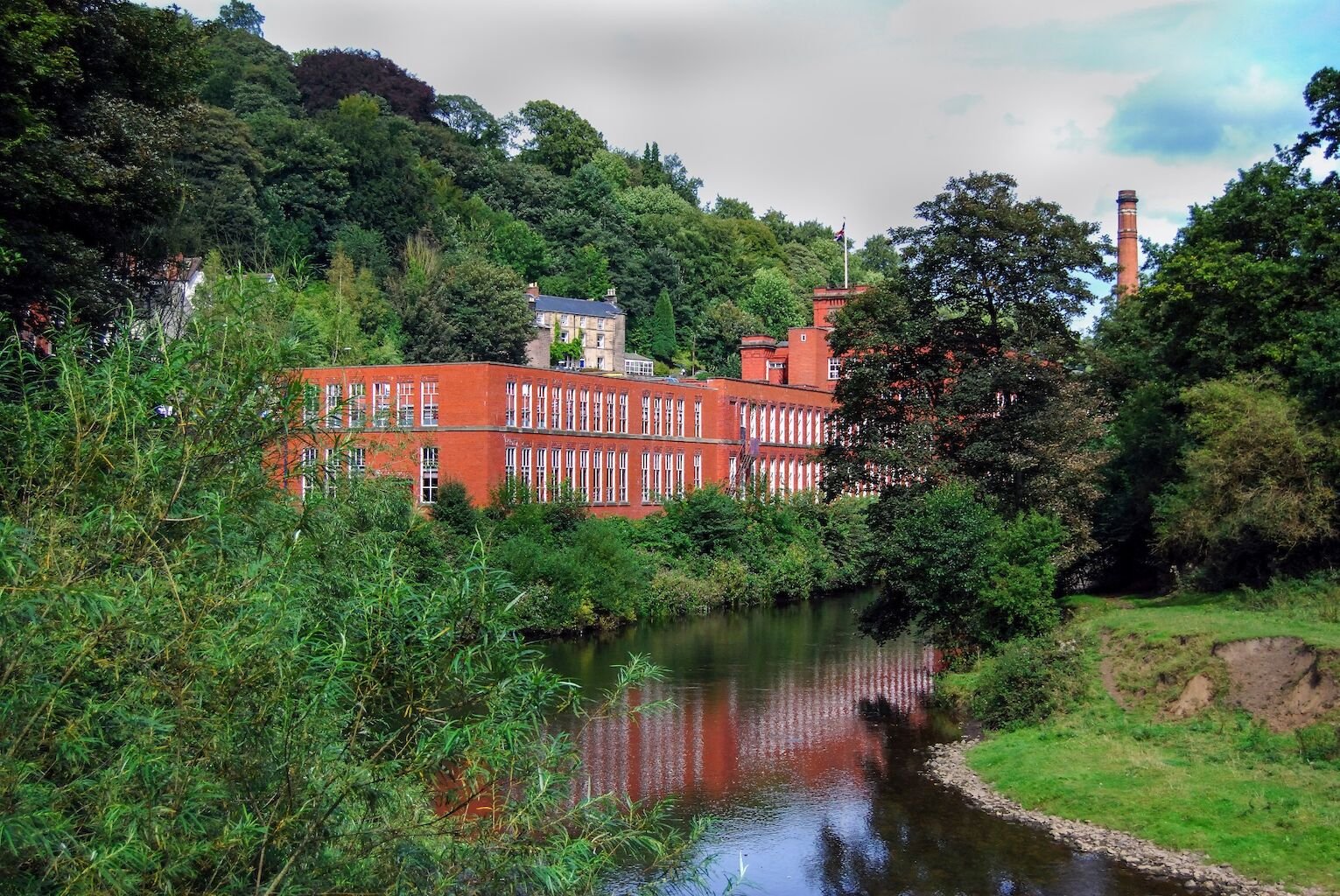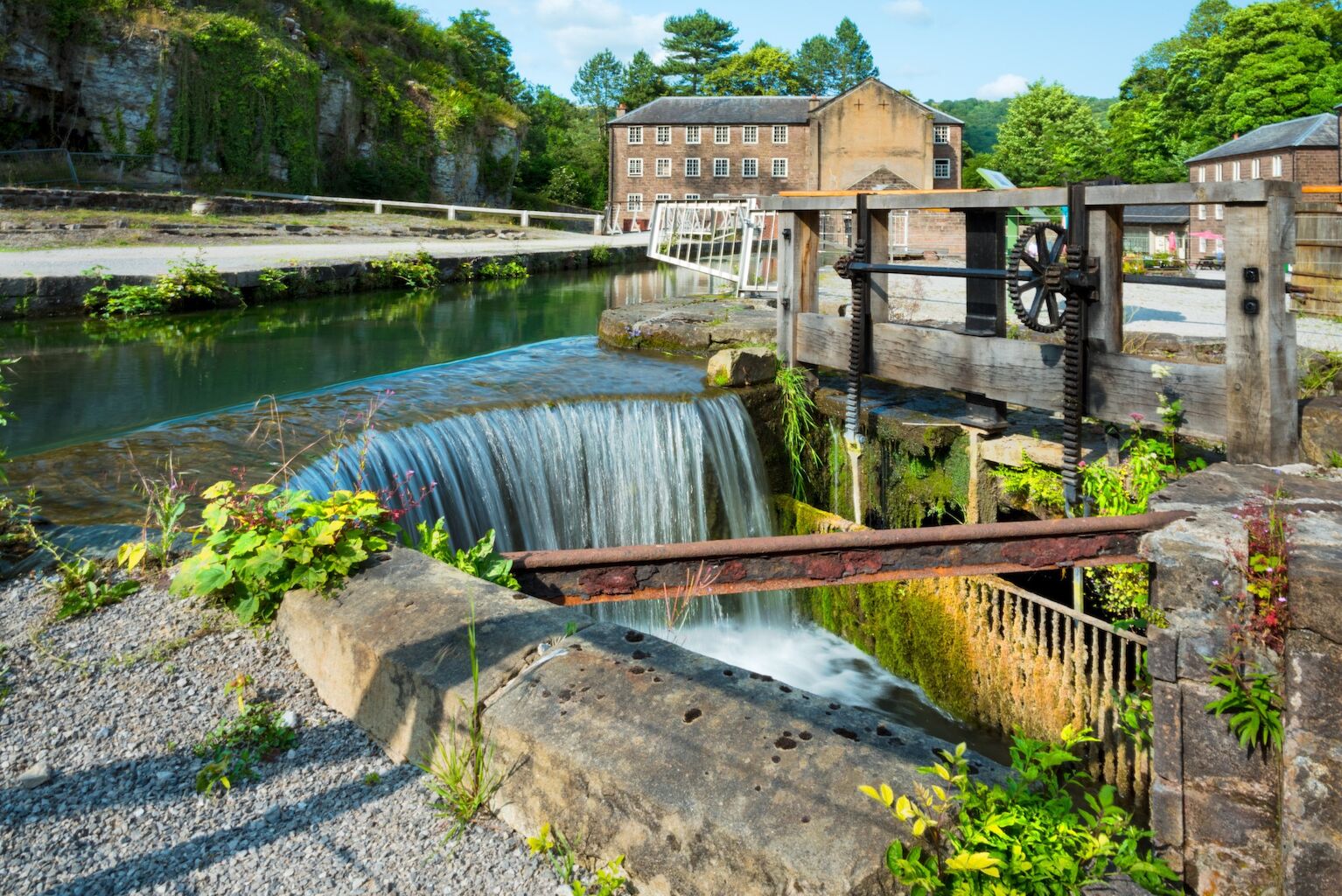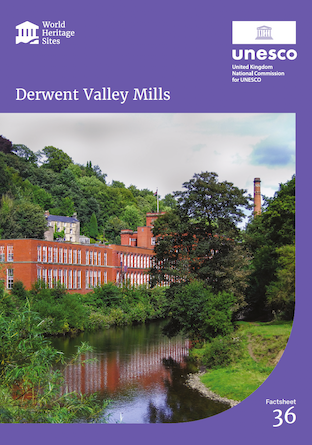Derwent Valley Mills
Derwent Valley Mills follows the River Derwent north to south including mill buildings, workers housing and the landscape along the valley from Matlock, through Cromford, Belper, Milford, Darley Abbey and into Derby.
From the 1700s waterpower was used on a large scale for the first time to power machinery spinning cotton and silk thread. This non-stop power supply, newly invented machinery and ways of organising workers led to mass production and the factory system leading to an Industrial Revolution.
What makes this UNESCO Designation special?
From the 1700s waterpower was used successfully on a large scale for the first time to power machinery spinning cotton and silk thread. Products were manufactured of better quality and faster than ever before, leading to an Industrial Revolution.
Housing for mill workers and other facilities were established including schools, gardens, parks, pubs, reading rooms, street lighting and gas supplies. Demand for food led to new ways of farming. The lives of the working families changed forever. The effects were global with cotton supplies coming from the Americas and Caribbean from plantations using enslaved African workers. Silk from moth cocoons was imported from Europe. Large buildings were constructed including iron framed fire-proof buildings with methods copied across the world.
As the factory system developed and spread, transport was needed to move products and people, driving change from packhorses and stagecoaches to toll roads, canals and railways.
During the 18th and 19th Century large scale production of textiles spinning moved to major cities. Growth in the Derwent Valley slowed leaving the area ‘suspended in time’. The landscape remains much as it did in the 1800s with the mills, waterways, housing and canals inserted into a rural landscape of farmland and woodland.

